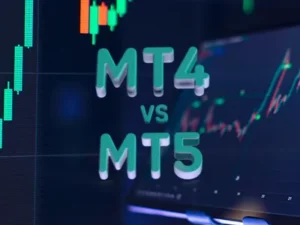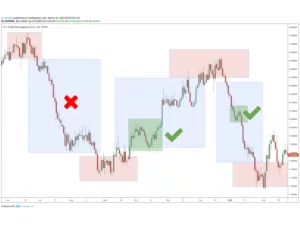Opening your first forex trading account in India requires a few careful steps to stay legal, safe, and profitable. Forex trading allows you to buy and sell global currencies, such as USD, EUR, GBP, and JPY, but under Indian law, residents can only trade currency pairs involving the Indian Rupee (INR). This means you can trade USD/INR, EUR/INR, GBP/INR, and JPY/INR through regulated brokers or Indian exchanges. The Reserve Bank of India (RBI) and Securities and Exchange Board of India (SEBI) oversee these activities to protect traders from scams and money laundering.
The process starts by choosing a reliable SEBI-registered or globally licensed broker, completing KYC verification, and connecting your Indian bank account for deposits and withdrawals. Beginners often start with demo accounts to practice without real money. Once confident, you can open a live trading account with as little as ₹1,000. Having a proper setup—like stable internet, clear trading goals, and risk limits—helps new traders gain experience without large losses.
Understand Legal Forex Trading Rules in India
Forex trading in India is legal only when done through authorized brokers or Indian exchanges. The Foreign Exchange Management Act (FEMA) restricts individuals from trading non-INR pairs, such as EUR/USD or GBP/USD. Only currency pairs that include the Indian Rupee are allowed.
Regulated Currency Pairs:
- USD/INR
- EUR/INR
- GBP/INR
- JPY/INR
SEBI monitors brokers operating in this market. Using international platforms for non-INR pairs may lead to penalties or frozen funds. If you wish to access global forex markets, open an account with a broker regulated by top-tier authorities like FCA (UK) or CySEC (Europe), but ensure they support Indian clients and offer INR transactions.
Choose a Reliable and Regulated Broker
Your broker decides how secure your money and trades will be. Indian traders can use both local SEBI-approved brokers and trusted international ones.
Top SEBI-Registered Brokers:
- Zerodha
- Upstox
- ICICI Direct
- HDFC Securities
Trusted Global Brokers Accepting Indian Clients:
- Exness
- XM
- FXTM
- Pepperstone
Checklist Before Selecting a Broker:
- Must hold SEBI or Tier-1 regulation (FCA, ASIC, CySEC)
- Supports INR deposits and withdrawals
- Offers MT4, MT5, or WebTrader platforms
- Average execution speed under 100ms
- 24/7 multilingual support
Always test the platform through a demo before depositing funds.
Complete Account Registration and KYC Verification
All regulated brokers follow Know Your Customer (KYC) norms to verify identity and prevent fraud. The process takes 24–48 hours.
Documents You Need:
- PAN card
- Aadhaar card
- Bank account proof (statement or canceled cheque)
- Passport-size photo
Once submitted and approved, you’ll receive login credentials to access your trading dashboard. Double-check name and address spelling to avoid verification delays. Keep copies of all documents for future audits or withdrawals.
Fund Your Trading Account
After verification, fund your account using secure methods like UPI, NEFT, debit card, or e-wallets. Most brokers support instant deposits.
Funding Methods and Limits
| Method | Processing Time | Typical Fee | Min Deposit |
|---|---|---|---|
| UPI | Instant | ₹0 | ₹500 |
| Net Banking | 1–2 hours | ₹0–₹20 | ₹1,000 |
| Debit Card | Instant | ₹0 | ₹500 |
| Skrill/Neteller | 1–2 hours | 2–3% | ₹1,000 |
Use the same payment method for withdrawals to speed up processing. Offshore brokers may charge currency conversion fees. Keep a separate bank account for trading to track profits and expenses clearly.
Choose Your Trading Platform
Most brokers offer MetaTrader 4 (MT4), MetaTrader 5 (MT5), or cTrader. Each has its own tools for charting, analysis, and order execution.
Popular Platform Features:
- MT4: Best for beginners, supports custom indicators and Expert Advisors.
- MT5: Multi-asset support (forex, stocks, crypto).
- cTrader: Fast execution and Level II market depth.
Start with MT4 for its simplicity. You can later upgrade to MT5 or cTrader for more advanced tools.

Place Your First Trade
Before trading real money, test on a demo account. Once ready, place your first trade on a small lot size.
Basic Steps to Open a Trade:
- Open MT4 and log in.
- Choose a pair like USD/INR.
- Set volume (0.01 lot = micro).
- Add stop-loss and take-profit levels.
- Click “Buy” or “Sell.”
Use 1% risk per trade rule — if your account is ₹5,000, don’t risk more than ₹50 on one trade.
Manage Risk and Withdraw Profits
Strong risk management is what separates successful traders from short-term speculators. It ensures that even when losses occur, your account remains stable enough to recover and continue trading. Every trade should have a planned stop-loss, defined target, and limited exposure based on your total capital. Avoid trading emotionally or increasing position sizes to recover losses — this is the fastest path to wiping out your balance. Consistent tracking and adjusting your risk levels help you stay disciplined and confident over time.
- Account size: ₹5,000
- Risk per trade: 1% (₹50)
- Stop loss: 25 pips
- Pip value: ₹2 → Trade size = 0.02 lots
This structure ensures that even a losing trade won’t cause significant damage to your account. With this plan, you could technically lose 20 trades in a row and still have 80% of your capital remaining — giving you time to recover and refine your strategy.
Profit Management and Withdrawals
When you start making profits, follow a clear withdrawal routine. Withdraw your profits regularly, ideally every week or after hitting a set goal (e.g., ₹1,000). This locks in your earnings and protects you from sudden losses during volatile market periods. At the same time, keep at least 50% of your profits in the trading account to gradually grow your capital base.
If your total profit for the week is ₹800, withdraw ₹400 and leave ₹400 to reinvest in upcoming trades. This balanced approach allows steady growth while securing real income.
Additionally, maintain a profit journal noting when and how much you withdrew. Over time, this helps you analyze your financial discipline and see how consistent your trading results are. Remember, protecting your profits is just as important as earning them — that’s what builds long-term success in forex trading.
FAQs
Is forex trading legal in India?
Yes, but only for INR-based pairs through SEBI or exchange-regulated brokers.



